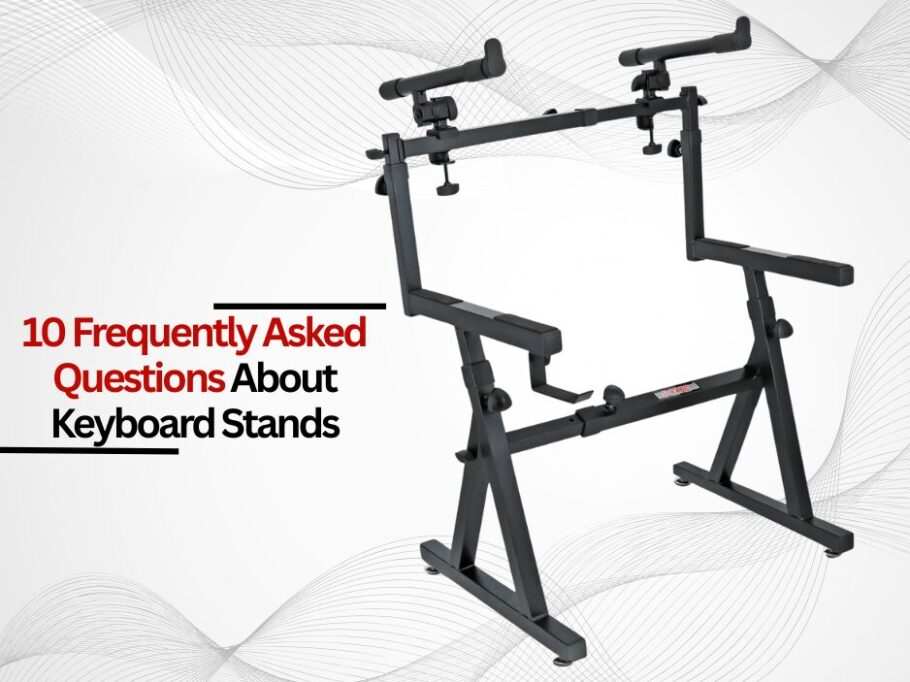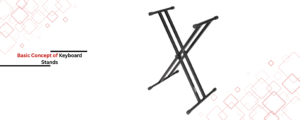Keyboard stands function as very useful tools, though they are often overlooked in an artist’s setup. From issues regarding stability to compatibility concerns, each stand has its practical and technical highlights, which further complicates the selection process. This stands true for beginners, gigging musicians, as well as seasoned professionals; they all have the same questions regarding keyboard stands.
To know more, Read: How Piano Stands Enhance Your Playing Experience in 2025: A Complete Guide
Basic Concept of Keyboard Stands
Keyboard stands are the ergonomic and supportive base of any performance or practice, combining portability alongside durability. In this article, we dive into that which should be considered while selecting, maintaining, or upgrading such essential devices, as tools, keyboards, or synthesizer instruments.
1. What Are The Different Types of Stands?
Keyboard stands are sub-divided into units based on design and functionality:
- X-stands: Foldable, double-braced frames ideal for portability.
- Z-Stands: Very stable, changeable height stands that have a zigzag base.
- Tabletop stands: Compact units designed for lightweight keyboards or secondary tiers.
- Multi-tier stands: Adjustable stands designed to hold multiple stacked keyboards.
2. What Is The Maximum Weight A Keyboard Stand Can Support?
A keyboard stand’s weight capacity purely depends on design. Heavy-duty Z-stands might support 150-200 lbs, while entry-level X-stands will typically go 50-100 lbs. And as always, remember to check the manufacturer’s specifications in order to avoid any damage or instability.
3. Are Adjustable Height Stands Necessary?
Adjustable stands fit different playing postures as well as accommodate different sizes of the keyboard. For ergonomic ease, a stand should enable the keyboard to rest at the height of the musician’s elbows, whether sitting or standing.
4. What Materials Are Used in Keyboard Stands?
The materials mostly include:
- Steel: Very strong, but heavy.
- Aluminum: Resistant to corrosion, light weight, and offers good strength.
- Plastic: Less durable, as seen in lower-end models.
- Rubberized Components: Used to reduce slipping.
5. Can Keyboard Stands Be Used for Synthesizers or MIDI Controllers?
Provided that the stand’s weight and dimensions fit the instrument, yes. Multi-tier stands are preferred for layered setups.
6. How Do I Ensure Stability on Uneven Surfaces?
Look for stands with adjuster-leveling legs, or those with rubberized feet that won’t slip. Outdoor or unevenly covered stages may require extra stabilization using sandbags or weights.
7. Are Portable Stands Less Durable?
If more lightweight aluminum is used, they may become less sturdy. Steel-based models offer greater portable and lightweight construction, making them easier to transport, while compromising on sturdiness.
8. Can I attach accessories to my Keyboard Stand?
Most stands nowadays allow for bolts to be used in attaching microscope arm mounts, tablet holders, and even extra tiers. This sort of functionality varies with the brand’s ecosystem.
9. How do I maintain a Keyboard Stand?
Regular maintenance includes:
- Tightening loose bolts and joints.
- Cleaning metal parts with a damp cloth to prevent rust.
- Rubbing padding for damaging wear.
10. Is There Value in Paying More for Keyboard Stands?
High-end stands justify the expensive cost because of advanced adjustability features and long-term durability. Budget stands appeal to casual players, while professionals benefit from rugged, road-ready designs.
Conclusion
Keyboard stands are now sophisticated tools due to advancements from brands such as On Stage, 5 Core, Roland, and Chromecast. In the coming years, future stands might include smart technologies or eco-friendly materials, although they will always be required to fulfill the primary purpose of offering an enduring and adjustable platform for creativity. Whatever the future holds for design, answering these FAQs enables musicians to make informed decisions and focus on what truly matters is the music.


